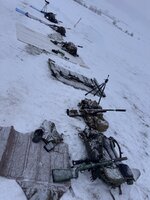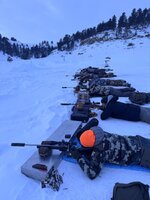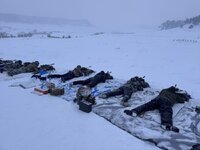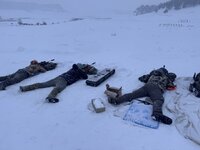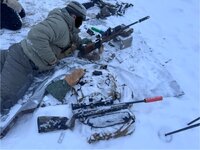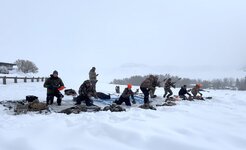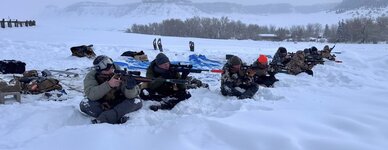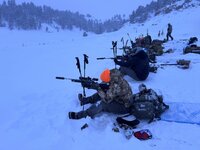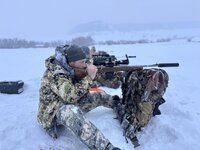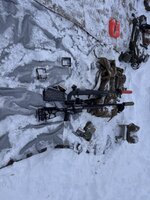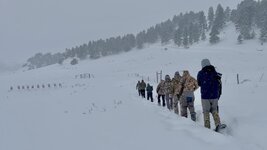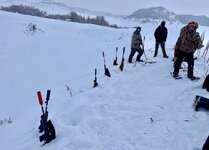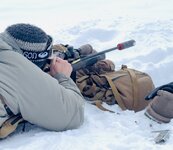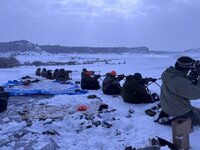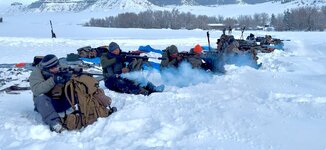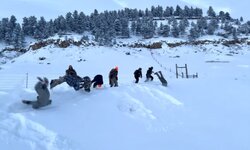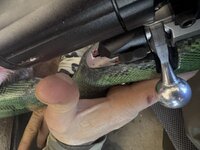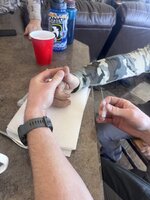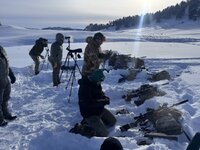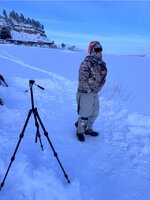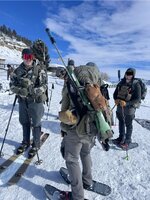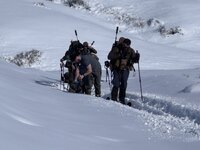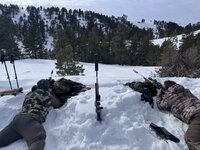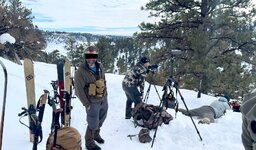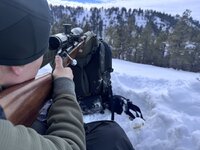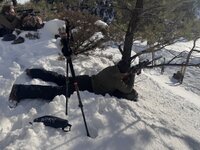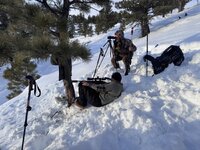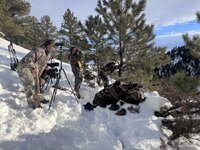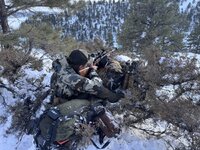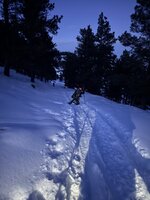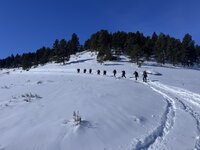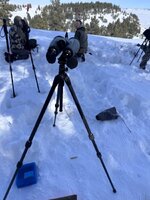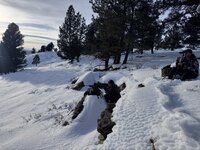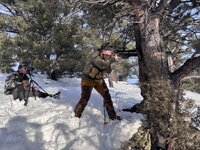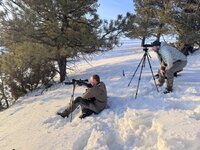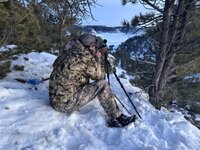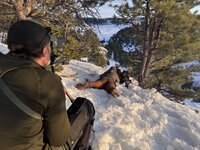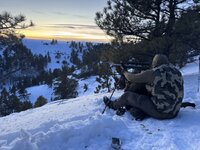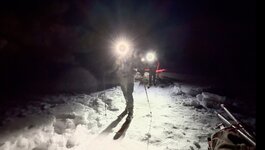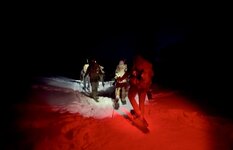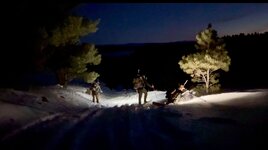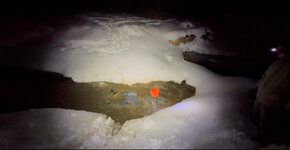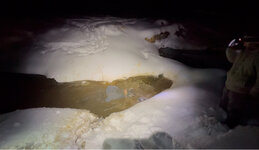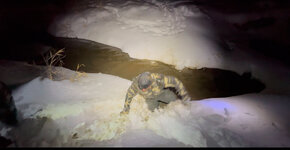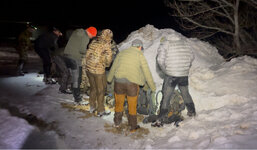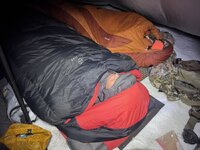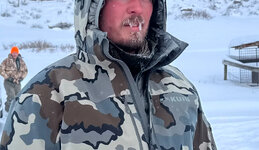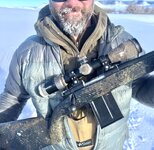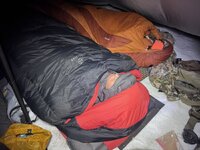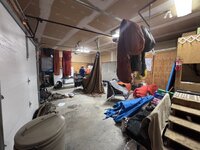Equipment and training:
This was true winter conditions. Most do not, shoot, backpack camp, or hunt in these conditions, though many claim to. This is reflected in their belief about equipment, clothing, rifles/optics, packs, etc. that fall flat when tested. Those I hunt with do- to the tune of 20,000+ rounds a season, and we have killed 15-20 elk and near countless deer in deep winter conditions.
Clothing:
Overall people’s clothing seemed to work ok for them with notable exceptions. We did not camp out overnight in this course, which would have showed some deficiencies in some choices. Natural materials work better overall for most.
Feet:
common insulated boots do not provide the insulation required for comfort or even safety. Mukluks with felt wool liners are by far the most suitable/warmest option of anything that was used. They allowed the two people using them (myself and another) to stand and shoot in below 0° F snow for 7+ hours a day with no coldness whatsoever. Next best is either oversized pac boots or rubber boots with felt wool liners.
The biggest issue with the Mukluks, rubber boots, and pacboots is traction- especially the Mukluks have basically zero. This necessitates carrying a pair of shoes for hiking and climbing, and switching out when mostly stationary.
The Vivo Barefoot Tundra ESC’s are likely the best choice for warmth and traction, unfortunately they have been on order for two months with no ETA.
Socks are best when fluffy and thicker, and boots must be loose enough all-round to not squish your feet at all. Good fluffy merino works fine. Alpaca, and Camel wool are better.
Baselayers:
No surprises here- synthetic dries faster, merino is warmer and more comfortable. Woolnet generally is the best of both worlds. The layer touching one’s skin needs to be extremely thin for quick drying as some found out during the rewarming drill.
Outer layer:
Lots of soft shell pants and jackets were used. A couple used hard shell/gortex pants and jackets, a couple used Fjallraven Keb Trousers, and I used Varustaleka TST wool pants.
Soft shells are fine, but they lose water repellency very quickly, and so not dry out all that fast. The Kebs are great with the G1000 waxed canvas portions, but are a bit thin for below 0° F use. The woolshell TST pantsbtahy I used are the best overall pants that I have seen for below 45° F or so. Very warm even when wet, breath well, fit well, durable.
Mid layers:
Mostly synthetic fleeces from those not from very cold places, with those that have spent a lot of time in these conditions mostly using fisherman’s, commando, and Icelandic wool sweaters- some thicker, some thinner. We generally see that from people that live and work in very cold winter conditions (I.E. Finland, Scandinavia, etc.).
There are several reasons for that. One is just simple longevity and durability- lots of “lightweight” backpacking and hunting clothing have relatively short lifespans/usefulness. Good natural materials just last year after year- quality wool sweaters last years/decades.
As well, they are more comfortable- especially under other layers. They feel less clammy when damp, they breathe very well, they don’t stink, they are more comfortable in a broader range of weather, warmer, etc, etc.
Not to be misunderstood- modern synthetic clothing definitely has its place and uses, but it is a far more narrow range of uses than marketing and people try to push. For extremely high exertion, short duration use- it works very well. For continuous living in, and thriving in the elements- not as well.
Insulation/puffy layers:
Both synthetic and down were used and there were a variety of brands/makes/models.
Despite marketing and common belief, synthetic is not all around superior to quality down. Synthetic is less warm, heavier, bulkier, and with a drastically shorter lifespan for full insulation. The lifespan of a synthetic puffy is measured in weeks, not months or years when used everyday- they lose loft very, very quickly. What they are good at is durability with tears and rips- so for range use that is what I/we tend to use. Surplus US military ECWS puff jacket and pants are heavy and bulky and lose half their loft pretty quickly, but can get beat up all day every day and not get shredded. For the general training/shooting they are a good choice.
For actually carrying and using when hunting/backpacking, good quality down is far superior.
A note on insulation- there’s a very large difference between “warm when moving, or stationary for short periods”, and “warm when stationary for long periods and living in it”. You need far more insulation for all day comfort than most jackets/pants. A jacket with 5oz of down fill with a base layer and a fleece isn’t working for 0° F weather all day. For true cold weather 10+ ounces of high quality down in a parka is required.
For mostly static range use, and extreme cold general use- caribou fur jackets/pants and the like are the answer.
Gloves and hats:
All kinds were brought and used. Like the mid-layer, there were trends based on where people were from/how much experience they get in winter. Fleece liners or mechanic gloves, and full fingered insulated over gloves were common from those with maybe less experience in these conditions. Wool and fleece liners, with leather or down mittens, leather mittens with gauntlets and felted wool liners, and one with beaver fur mittens were most common with those from these conditions.
For shooting thin fleece gloves suck due to slipping and lack of grip. Thin leather gloves, especially with a thin wool lining work best. For insulted gloves- fingered gloves suck. You must keep all your fingered thietyer for them to share warmth. Higher gauntlet style mittens with felted wool liners are very warm, durable and functional- surplus Artic Flyer Mittens for example.
The ultimate is beaver, coyote, bison, caribou, and especially seal skin mittens/gauntlets. They have no equal.
Hats- wool beanies/tobogans. Not acrylic or synthetic. Hand knit, wool beanies are the way for most. I and the other teacher wore hand knit wool version that a forum members wife made and gave to us- spectacular. I also used a Turkish sheep skin/fur hat and it works fantastically- head was never cold at all.
Face masks- absolutely necessary in this kind of weather. Thin merino worked well. Thicker wool knit “bank robber” masks work as well or better.
Ground insulation:
We didn’t camp, and only one night of use on sleeping mats during the rewarming drill- but, high R value of 6+ is required.
For shooting everyday, ground insulation is also required. Mist used foam slapping pads, a couple tried their inflatable pads- but they suck for shooting and switched. Animals skins are by far the warmest and most comfortable to lay on all day in snow. I meant to bring a hide to lay on while shooting but forgot it.
Sleeping bags:
Again, not camping out, only during the rewarming drill were bags used. There were synthetic, pure down, and water resistant down used. Quality down bags are the way for all the reasons that applies to puffy jackets/pants.
